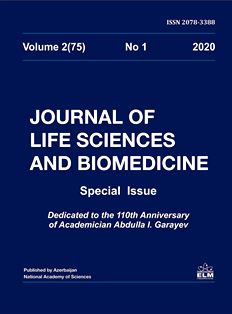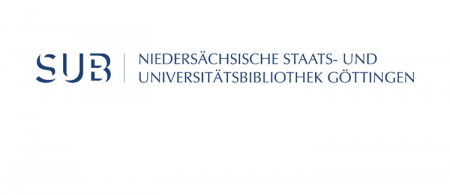
The effect of nanoparticles of three-valent iron oxide on the activity of polyphenoloxidase in wheat seedlings
Research article: The effect of nanoparticles of three-valent iron oxide on the activity of polyphenoloxidase in wheat seedlings
Authors: G.H. Mammadli1, S.N. Omarova1, A.A. Kuliyev1, I.V. Azizov2
1Baku State University, Baku, Azerbaijan
2Institute of Molecular Biology and Biotechnologies, Azerbaijan National Academy of Sciences,
Baku, Azerbaijan
Abstract: The change in the content of phenolic compounds in two-week-old seedlings of various varieties of durum and bread wheat under the influence of three-valent iron oxide nanoparticles was studied. The obtained data testified the activity of the enzyme polyphenoloxidase. For this purpose, guidelines were used. It has been established that the intensity of phenolic metabolism in wheat seedlings under the influence of three-valent iron oxide nanoparticles depends on the varietal characteristics. In the seedlings of tested durum wheat varieties, nanoparticles of three-valent iron oxide led either to a slight increase in the oxidation of polyphe-nols (Yagut and Garagylchyg 2), or to a sharp decrease in the activity of polyphenoloxidase (Garabagh), or practically did not cause any changes (Gyrmyzy bughda) in oxidation intensity of polyphenols. In the case of bread wheat varieties, the activity of polyphenoloxidase, under the influence of three-valent iron oxide nanoparticles increased (except Mirbashir-128). The resulting data may serve as a basis for selection of wheat varieties to obtain flour products of high quality.
Keywords: Durum and bread wheat varieties, phenolic compounds, polyphenoloxidase, nanoparticles of three-valent iron oxide
References:
Ermakov I.P. et al. (2007) Physiology of plants: a textbook for students. universities. Moscow: Academy, 2007: 464-465.
Kovalenko L.V. (2006) Biologically active iron nanopowders. M.: Nauka, 2006: 57-58.
Kreslavsky V.D. et al. (2012) Signaling role of reactive oxygen species during stress in plants. Plant Physiology, 59(2):163-178.
Mazey N.G., Mednaya A.E. (2011) Influence of heavy metals and low temperatures on the morphological and physiological processes of buckwheat and wheat seedlings. Proceedings of the Penza State Pedagogical University named after V. G. Belinsky, natural sciences, No. 25: 624-631.
Olenichenko N.A., Osipov V.I., Zagoskina N.V. (2006) Phenolic complex of winter wheat leaves and its changes during low-temperature adaptation of plants. Plant Physiology, 53: 554-559.
Sinyutina S.E., Mozharov A.V., Zaichenko M.A. (2013) Effect of lead and nickel salts on the enzymatic activity of barley. Bulletin of TSU, 18(1): 255-257.
Tarasenko S.S. (2015) Increasing the yield of premium pasta flour based on the study of the enzymatic composition of finely dispersed products. Orenburg State University, 1001-1003.
Frolova S.A., Titov A.F., Talanova V.V. (2011) Effect of low-temperature hardening on the activity of proteolytic enzymes and their inhibitors in the leaves of wheat and cucumber seedlings. Plant Physiology, 58: 208-212.
Janas K., Cvikrová M., Palagiewicz A. et al. (2002) Constitutive elevated accumulation of phenylpropanoids in soybean roots at low tem-perature. Plant Science, 163: 369-373.
Lin D. (2007) Phytotoxicity of nanoparticles: inhi-bition of seed germination and root growth. En-viron. Pollut., 150(2): 243-250.
Masarovicova E., Kralova K., Sersen F., (2013) Plant responses to toxic metal stress. Handbook of plant and crop stress. In: CRC Press, 595-634.























